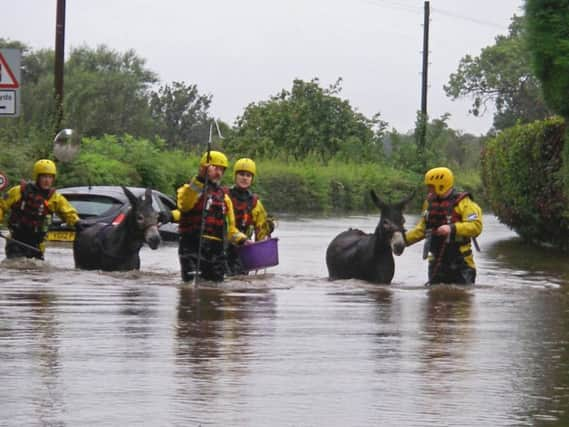South Yorkshire police chief calls for more scrutiny of the Environment Agency


It is more than a decade since large parts of Sheffield – including Meadowhall – were swamped and major new flood defences were installed as a result.
They proved sufficient to protect the city from the worst impact of the storm, but farming communities in Doncaster were badly affected when the River Don burst its banks further downstream, raising questions over whether water was simply funnelled through new and improved defences, leaving exposed.
Advertisement
Hide AdAdvertisement
Hide AdDr Alan Billings, South Yorkshire’s Police and Crime Commissioner, spent time with the emergency services as the emergency and rescue operation unfolded and has now raised his own questions about the relationship between the Environment Agency and the communities it serves.
He said: “The local authorities and the emergency services are all subject to local scrutiny and most of their decision-making is taken locally.
“This is less true of the Environment Agency. Do we need greater transparency around its decisions and greater local accountability for them?
“Although the EA insisted that in deciding on a flood relief scheme or flood defences for one place, the consequences upstream and down of those decisions is always taken into account, many in the Don Valley believe they were the victims of decisions taken elsewhere.
Advertisement
Hide AdAdvertisement
Hide Ad“This needs to be far better understood in each locality,” he said.
Dealing with the flooding had been especially challenging for the emergency services and other authorities because of the changing dynamics on the situation, said Dr Billings.
“Most critical incidents – such as a fire or terrorist attack – can be assessed, contained and dealt with fairly quickly.
“The floods were quite different. This was protracted, over many days and over a wide area.
Advertisement
Hide AdAdvertisement
Hide Ad“Weather forecasting was a major factory: how much rain was going to fall, over which parts of the country and over what timescale.
“Weather reports were changing on a daily basis. This then had implications for how likely it would be that rivers would overflow and at what points,” he said.
Dr Billings also recognised the plight of both flooding victims and the demands public sector staff dealing with the situation took on board.
He visited Bentley in Doncaster, seeing one couple’s home as the flood water receded.
Advertisement
Hide AdAdvertisement
Hide Ad“We met in the devastated downstairs rooms of the house. Their two children were upstairs where they had been living for five nights. Brown, foul smelling water was still present. Their ruined furniture and possessions were heaped up in the middle of the room.
“The high point that the water reached was marked by a pale orange line around the walls.
“This was he second time they had been flooded and they had no insurance. They seemed almost traumatised and looked around with weary resignation.
“There was nothing I could say,” he said.
Dr Billings also visited some of the emergency service crews at work in the area, including those from police and the fire service who themselves were victims of the floods.
Advertisement
Hide AdAdvertisement
Hide Ad“Wherever I went people were full of praise for the emergency services,” he said.
“There was a general recognition that officers had to act very swiftly and put in a lot of work and effort. Several knew of instances where officers had ‘gone the extra mile’ as one person put it,” he said.
An Environment Agency spokesperson said: “Flood defence investment takes place where the risk is highest, wherever it is across the country and where it will benefit the most people and property.
“When building flood defences there is a legal requirement that they cannot increase the flood risk of communities either upstream or downstream, and if an increase in risk is identified, it must be mitigated.
“We take flood risk to all communities incredibly seriously and have a long-term plan to further upgrade and invest flood defences across the area to benefit local communities.”